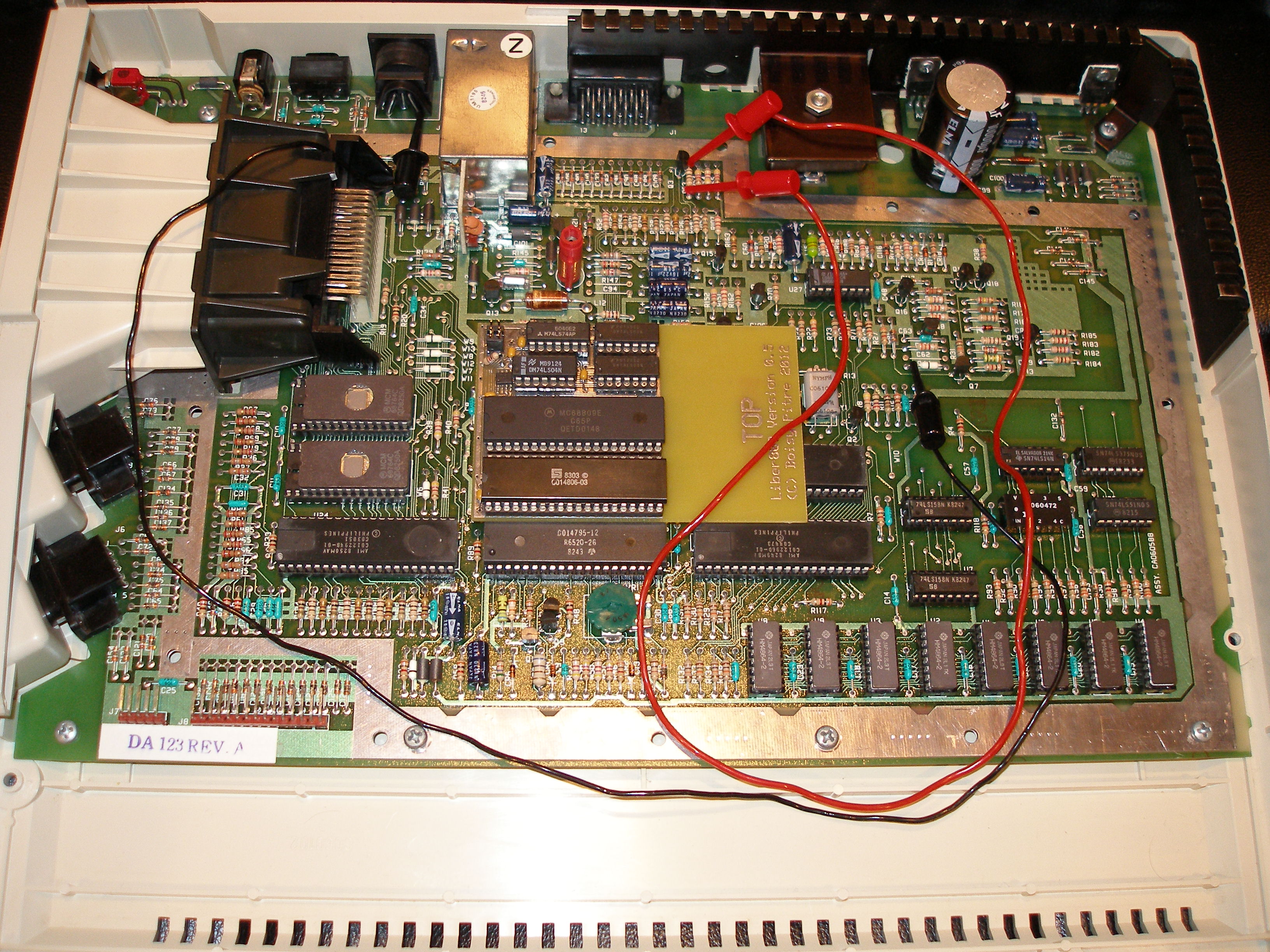- The Liber809 board had stopped working for some inexplicable reason. As it turns out, a piece of solder flake had found its way onto the trace from the Maxim DS1100 that leads to the Q clock on the 6809, leaving it perpetually grounded. Needless to say, I'm going with solder masked boards from now on.
- The XEGS had timing issues with the firmware going into all-RAM mode. The ANTIC was picking up writes to addresses outside of its range of $D000-$D7FF. We have theories on this subtle timing problem, but reports from others that the 800XL and 1200XL worked fine in all-RAM mode has us thinking this is something unique to the XEGS.
Sloopy, a member of the AtariAge forums, sent over an Atari 800XL which I readily disassembled. After some mucking around, the Liber809 board came up, and indeed worked well, even in all-RAM mode. Slor's excellent Liber809 demo in the previous post came up just fine, sound and all.
With a solid, reliable Atari system running the Liber809 board, I can now focus on bringing up NitrOS-9 through DriveWire, which is how I envision the majority of folks will want to use the operating system. So I've carved out some time this weekend to do just that.






